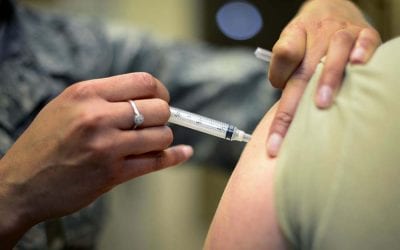
I don’t know where you live, but I’m in the Northeastern U.S. We were just walloped by a huge snow storm. With almost 2 feet of snow on the ground there is ample opportunity for snowy photographic images.
If you’ve been traveling to Philadelphia, Washington DC, or Baltimore it’s the same white scenes everywhere. When you travel to the ski slopes of the Rockies, Alps, Pyrenees, or Andes, it’s white there too.
When making photographs in snowy conditions, great care must be taken, as snow has a tendency to fool your camera’s meter.
Your camera’s exposure meter is calibrated for setting exposures for medium gray, what photographers call “18% gray.” Your meter has no idea what you’re pointing it at; water, ice, snow, green grass, brick buildings.
 If you want the right exposure, you can point the camera and therefore its meter to something which approximates medium gray, such as green grass, or use the right exposure compensation.
If you want the right exposure, you can point the camera and therefore its meter to something which approximates medium gray, such as green grass, or use the right exposure compensation.
Unfortunately, merely correcting your exposure, probably won’t get you a final snowy photo you’ll like. Snow throws off your camera’s white balance too, and sometimes the light conditions are such that your camera’s white balance can’t be set automatically.
There are two basic characteristics which I believe all photographs must have. Whites in the photo must appear white, and blacks must appear black. Can you imagine a professional photographer taking a beautiful wedding photo of the bride and have the dress look gray? It’s the same for any photo.
For example, can you imagine making an image of a snow scene at the Grand Canyon, which has the snow look gray? People might think you took a photo of day old snow on the streets of a big city, instead of a National Park. It’s not how any of us want our travel photos, or any photo to look.
Some Digital Point and Shoot and consumer level DSLR cameras have a “Snow” or “Winter” setting. Those settings generally work. They are designed to correct the camera’s auto white balance calculation, and properly lower the exposure value to avoid over-exposing the image. Of course, when you use these modes you’ve lost control of your aperture and shutter speeds, which limits your creativity.
That’s alright, as you can achieve the same or better results on your own.

If you’re using a Point and Shoot digital camera you may not have the ability to set a custom or manual white balance. If that’s so, use auto white balance and make the necessary correction later in post-processing.
If you can set a custom or manual white balance, use that setting. You can simply point your camera to a clean patch of snow, and use the custom or manual white balance procedure for your specific camera. This way you’ll get the correct balance of colors for your photograph. You probably can use this setting for your entire photo shoot.
Beware of shadows! Even on uniform patches of snow there can be darker areas. Using them to set the white balance will produce an incorrect color cast which will need to be removed in post processing.
For your exposure setting, you’ll probably need to make an active correction or set your exposure to compensate for the snowy conditions.
You could use your camera’s spot metering mode, if it has one. Aim the camera to your subject. If it’s actually the snow, point your camera to it. If you’re taking a photo of a person in a snowing situation, point your camera at the person or their clothing.

I also suggest using bracketing to take your snowy photographs. Take one photograph at the exposure setting you’ve decided upon, plus one under and one over it. That way you should get a great exposure for each image.
Enjoy the snowy weather while you travel. Don’t let snowy conditions ruin your travel photos.
Ned Levi is a long time professional photographer with a passion for wildlife and travel photography. You can view some of Ned’s travel and other photos at NSL Photography or get more travel photography advice at the NSL Photography Blog.
After many years working in corporate America as a chemical engineer, executive and eventually CFO of a multinational manufacturer, Ned founded a tech consulting company and later restarted NSL Photography, his photography business. Before entering the corporate world, Ned worked as a Public Health Engineer for the Philadelphia Department of Public Health. As a well known corporate, travel and wildlife photographer, Ned travels the world writing about travel and photography, as well as running photography workshops, seminars and photowalks. Visit Ned’s Photography Blog and Galleries.

